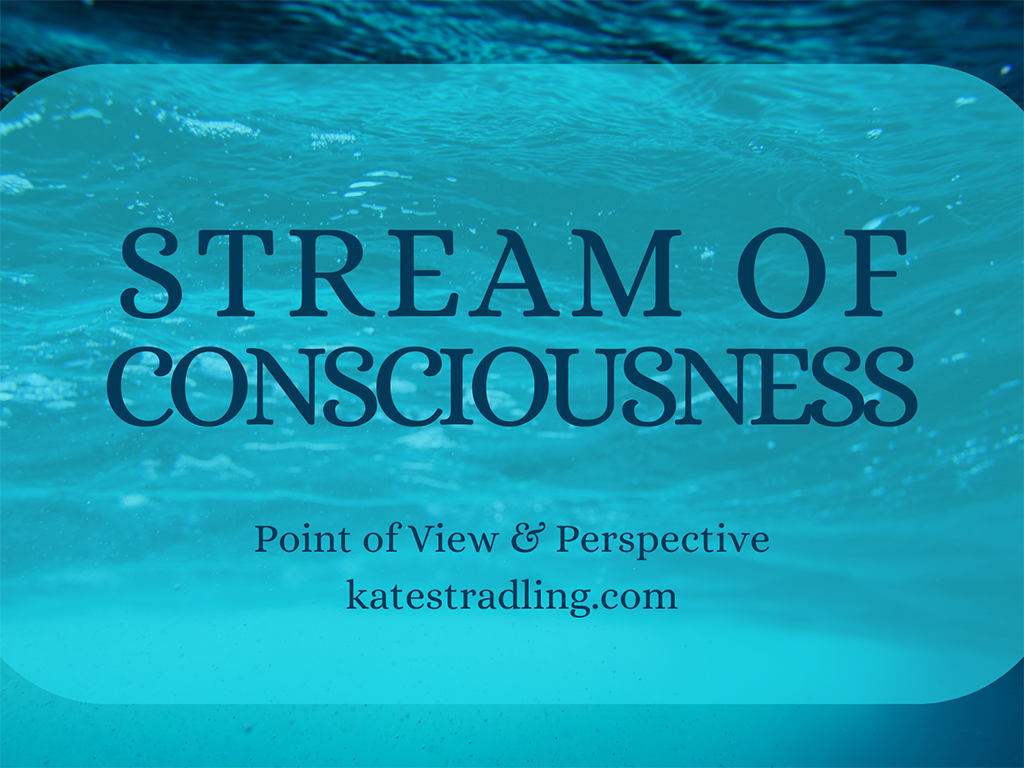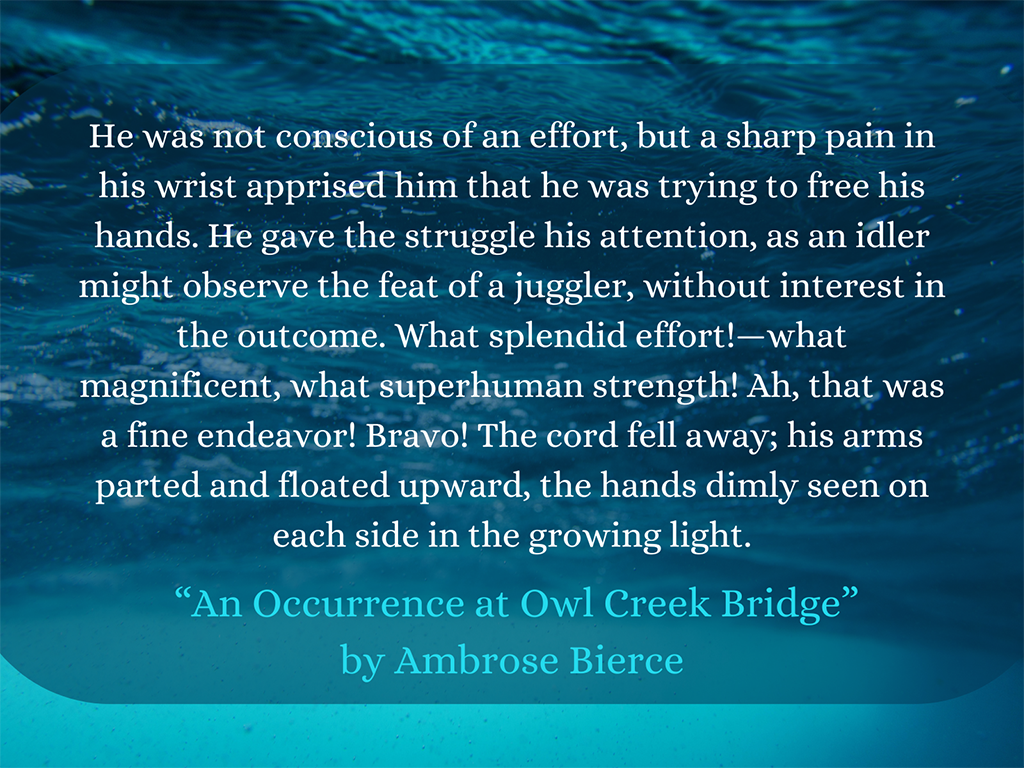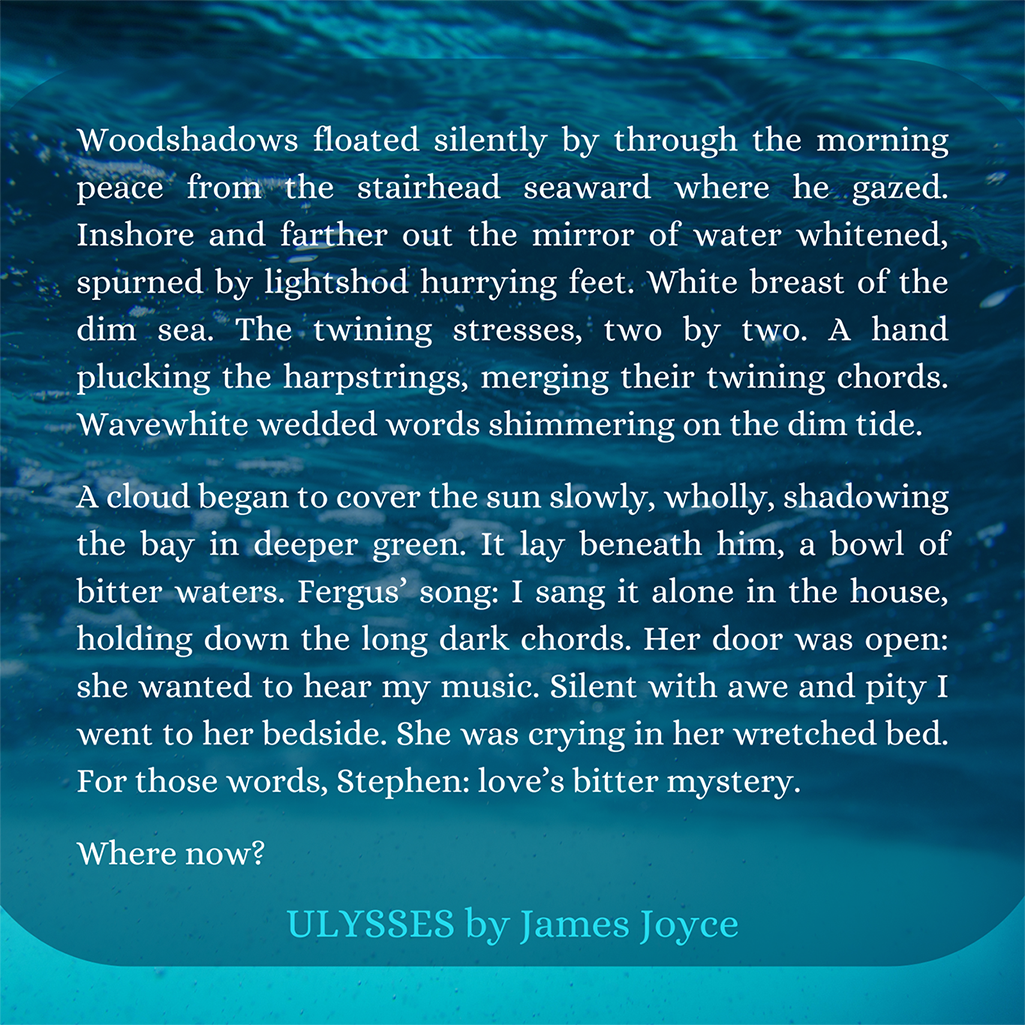Stream of Consciousness is a narrative style that conveys a character’s thoughts and observations as they occur. Because the human brain is generally chaotic, this method creates a rambling, often confusing story.
That’s a feature, not a bug.

Textbook example
If you studied Stream of Consciousness in grade school, the sample text was likely “An Occurrence at Owl Creek Bridge” by Ambrose Bierce.
This short story, set during the American Civil War, expands a split-second into several pages. Its main character imagines a daring and elaborate escape from the noose around his neck in the same moment that he falls and dies.

While Bierce was an early experimenter with Stream of Consciousness, though, the uncontested master of this style is James Joyce.
But first, some hallmarks of the style.
Bloviators welcome
In Stream of Consciousness, where wordiness and affectation fit right in, you can expect to find the following characteristics:
- Associative connections (i.e., when thoughts wander off on tangents). For example, the Viewpoint Character notices a glint of sunlight on the window, which reminds them of the summer they spent in Spain, but their cousin Gerald hates Spain and they never really understood why. What is Gerald doing this afternoon, anyway?
- Repetition. The narrative revolves around the Viewpoint Character’s mental fixations, or else repeats words and phrases that echo in said character’s mind.
- Sensory observations. Sights, sounds, smells, textures, and/or tastes flow in rapid succession. A million tiny details crowd the Stream of Consciousness narrative.
- Disjointed syntax and punctuation. An inner monologue doesn’t obey the standard rules of grammar. Fragments, ellipses and em-dashes abound.
- Run-on sentences. This sub-category of disjointed syntax happens when multiple independent clauses string together without the correct punctuation to separate them. This signals the flowing stream of thoughts that course from the Viewpoint Character to the Reader.
- Non-linear prose. Emotion reigns the narrative, not Time. The story might descend into a flashback or jump along its own timeline according to the Viewpoint Character’s whims.
Basically, Stream of Consciousness creates a jumbled, esoteric mess.
If you think I’m exaggerating, consider this excerpt from Joyce’s ULYSSES. (As a hint to context—not that it helps—the main character, Stephen Dedalus, is looking at the ocean.)

This novel is entirely Stream of Consciousness. It is roughly 800 pages long (give or take, depending on who’s typesetting it), and the entirety of the story takes place over a 2-day period of time.
You read that right. Eight hundred (800) pages to cover two (2) in-story days. Basically, the narrative explores every errant thought that wanders across its main character’s path.
And, after he completed it, Joyce reportedly did not write another word of prose for an entire year. This style is taxing both to create and consume.
So what’s the point?
Maybe there is none.
In theory, Authors who excel in Stream of Consciousness use it to reveal emotional and psychological truths. They aim for a raw representation of how the human brain processes the world.
This rawness, though, exposes the style’s main weakness. Our brains actually process a dozen thoughts in the blink of an eye, whereas the written page can only present them in a linear string of words. This takes far longer than that blink-of-an-eye for the Reader to absorb.
Which renders Stream of Consciousness troublesome to maintain in long-form writing. Its disjointedness becomes quickly difficult to follow, which can make it exhausting and off-putting to read. Instead of muddling through the story, Readers’ minds wander on their own tangents.
Ironically, what should be the deepest of narrative styles becomes alien instead.
This adheres to the “Too Much Information” principle: namely, that we don’t trust people who provide too many details too early in a relationship. If your Reader doesn’t yet know your character, why should they invest the mental labor in deciphering that character’s inner monologue?
If they do know the character, however, Stream of Consciousness can be a powerful rhetorical device.
The moral of the story
Joyce suffered so the rest of us don’t have to. With first ULYSSES then FINNEGAN’S WAKE, he drew Stream of Consciousness to its furthest extreme. There’s no need to match his long-form feats. He can keep the trophy.
Instead, consider this technique in small doses, moments of hyper-awareness when a character’s senses and thoughts become the focal point of a scene. When used in this manner, Stream of Consciousness propels a narrative forward like a stretch of rapids on a flowing river. Its high-energy nature shines in action sequences and emotional epiphanies. Couching it within more restrained prose will make it that much more memorable.
In short, for those times that you want to overwhelm the Reader alongside your Viewpoint Character, this supplies the perfect mechanism.
- What are your favorite applications for Stream of Consciousness?
- Why do you love (or hate) this narrative technique?
Up next: Free Indirect Speech
Previous: Epistolary Style
Index Page: Point of View